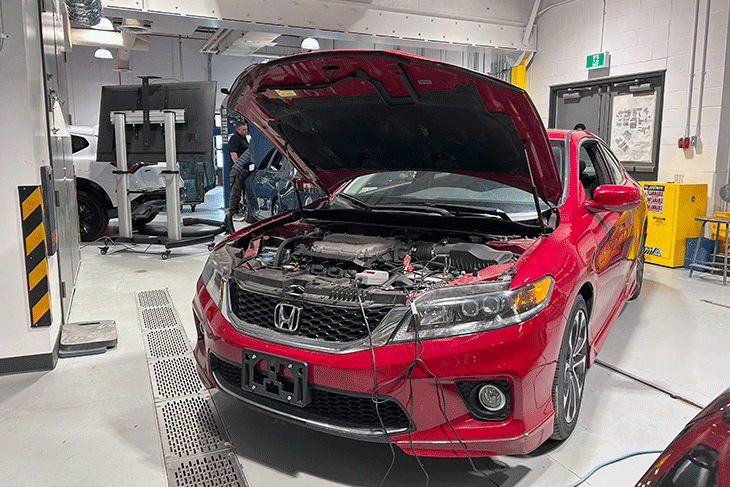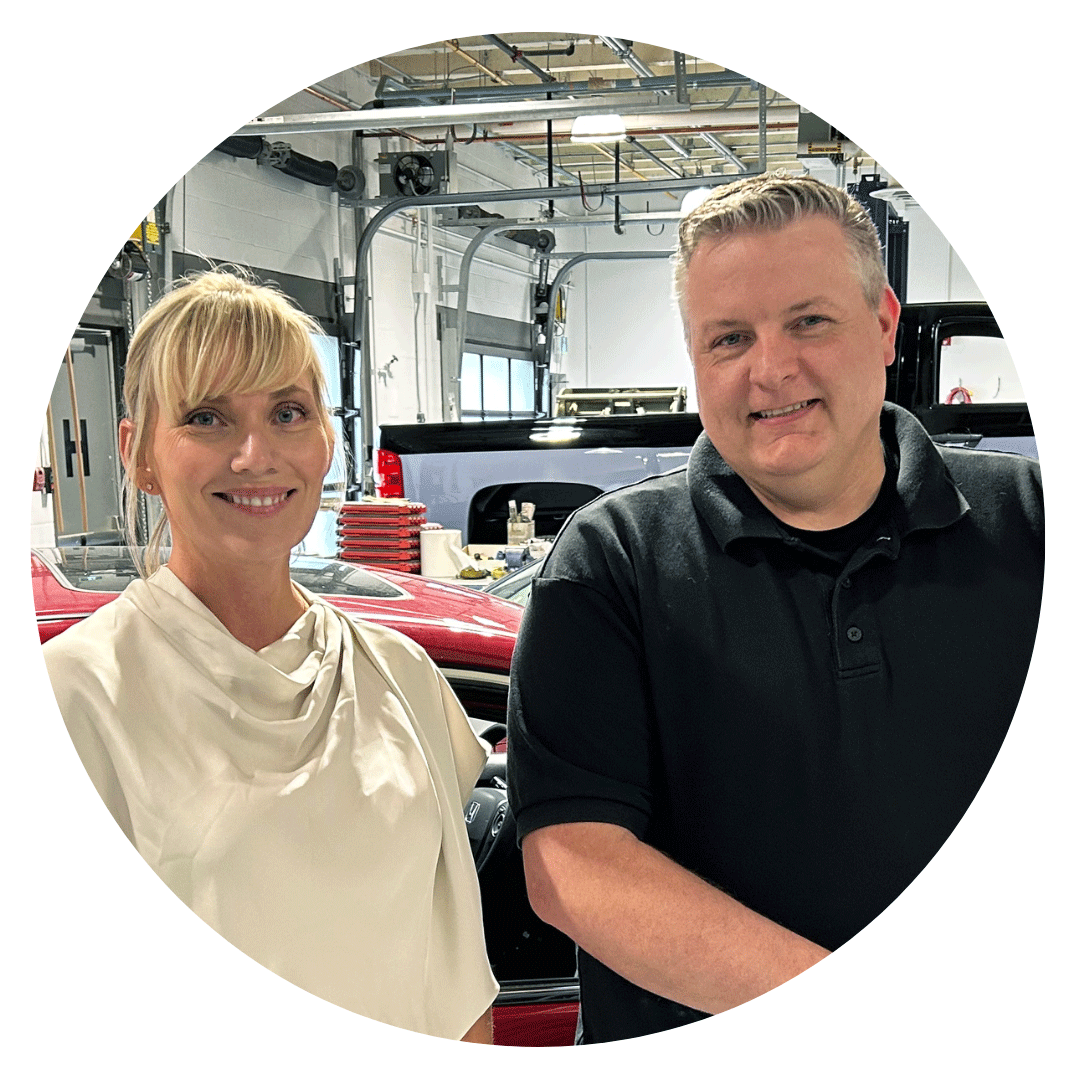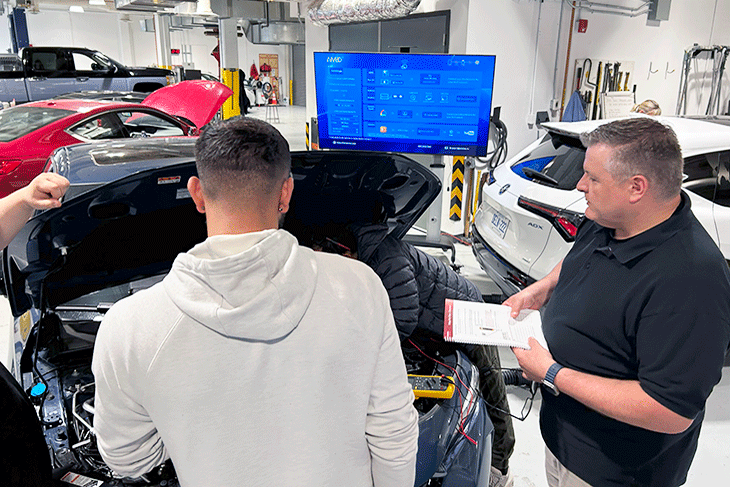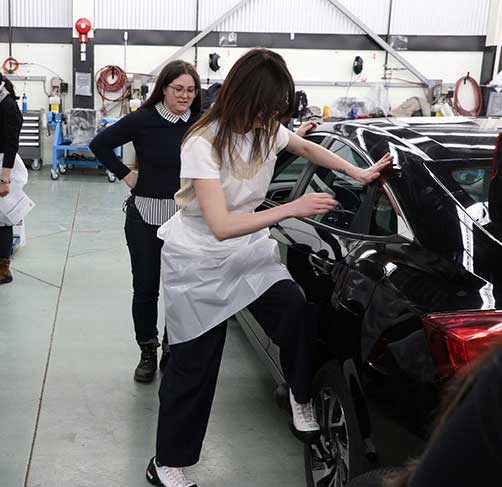Honda Canada partnership helps students, faculty train on top gear

What does a shop car look like at SAIT these days? Pretty slick, thanks to a donation from Honda Canada.
When Honda closed their regional technician training centre in Calgary last year, they reached out to SAIT to see about using some space on campus to deliver their training.
Through a charitable donation, they also gifted equipment from the centre — everything from hand tools to benches and cabinets to cars — to the School of Transportation.
Now, with Honda on campus for their technician training, SAIT faculty have a chance to look in and keep current with the latest technology, while the donated vehicles and equipment are supporting SAIT’s automotive technology students and apprentices.

“We’re excited to collaborate with Honda and incredibly grateful for the donation,” says Chenoa Hansen, academic chair, automotive programs, School of Transportation. “We’re thrilled to see the difference it’s already made for our students.”
Right: Chenoa Hansen, academic chair, automotive programs, School of Transportation with Shayne Tempeny, Honda Canada.A win-win on wheels
The donated equipment and vehicles, including some late-model cars — a later model means a newer year of manufacture — are primarily used by students in SAIT’s Automotive Service Technology diploma program and Automotive Service Technician apprentice, pre-employment and dual-credit high school programs.
“At Honda, we believe in the power of education and the value of hands-on learning,” says David Rampartab, Manager of Technical Training at Honda Canada. “Our donation to the Southern Alberta Institute of Technology supports students in gaining real-world experience with the tools and technologies shaping our industry.”
The donation both enhances the existing equipment inventory and allows the school to replace a few older cars, taking advantage of the newer technology in the later models.
“By investing in advanced teaching and continuing education, we’re helping develop the next generation of innovators who will lead the future of mobility, sustainability and safety in Canada,” says Rampartab. “Strong education-industry partnerships, like the one we have with SAIT, are key to sharing knowledge, fostering talent and building better communities.”
High costs associated with specialized equipment, materials and facilities make automotive programs expensive to deliver, says Hansen.
“This was really a chance to modernize our fleet, which is significant,” adds James Oancia, academic chair, automotive programs School of Transportation. “Having an industry partner support us in this way, makes a big difference when it comes to managing our programs.”

Above: Shayne Tempeny, Honda Canada, delivers Honda’s technician training on campus at SAIT’s School of Transportation.
Changing technology means professional automotive technicians regularly train to keep up to speed with new tech and new car models. Recently, a lot of that training has moved online.
“It doesn’t make sense to keep a building open when it’s often empty,” says Oancia. “But manufacturers, such as Honda, still need a place to provide some in-person training.”
With a facility licensing agreement in place, Honda works with SAIT to deliver a week of training to their technicians on site about a dozen times a year.
“Honda uses our shop space to bring in their vehicles, including pre-production models — cars that aren’t on the market yet — and our faculty get to take a look while they’re training their techs,” he says. “They’ve even invited our faculty to join in on the training sessions. It’s a great way for our instructors to keep their knowledge up to date and their technicians don’t have to travel outside Alberta for in-person training.”
What’s inside and under the hood counts
Generally, the school needs a wide range of shop cars for teaching and training across SAIT’s automotive programs.
The usefulness of each car depends on its components and how they support teaching and learning. For example, if you want to show someone how drum brakes work, you need an older car, while an electric vehicle is completely different from any gas-powered car.
“We have a row of older cars — I call it knocker alley,” says Hansen. “These cars average 20 years old and have mechanical engine knocks and sounds that indicate something specific is wrong with the engine. We still use them for teaching.”
In SAIT’s automotive service programs, training gets more technical in the third and fourth semester — or third and fourth training periods for apprentices.
At this point in the program, instructors put bugs or faults into the car’s computer that need to be diagnosed and fixed. This is when a fleet with more late-model cars really makes a difference, says Oancia.
“The vehicles from Honda will benefit SAIT for five to 10 years at least,” he says. “About 800 apprentices and more than 1,000 students will benefit from the donation this year alone. That’s huge — for them, for our school and for the industry that will hire our graduates.”

Taking new skills for a test drive
The donated Honda cars were front and centre as the School of Transportation hosted a workshop for employees on automotive basics during International Women’s Day.


Oki, Âba wathtech, Danit'ada, Tawnshi, Hello.
SAIT is located on the traditional territories of the Niitsitapi (Blackfoot) and the people of Treaty 7 which includes the Siksika, the Piikani, the Kainai, the Tsuut’ina and the Îyârhe Nakoda of Bearspaw, Chiniki and Goodstoney.
We are situated in an area the Blackfoot tribes traditionally called Moh’kinsstis, where the Bow River meets the Elbow River. We now call it the city of Calgary, which is also home to the Métis Nation of Alberta.